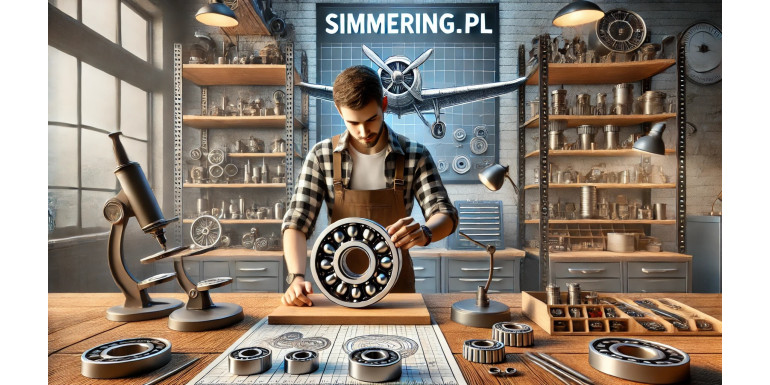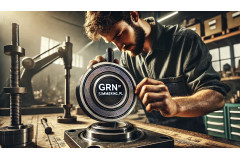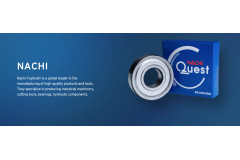
Comprehensive Guide to Rolling Bearing Codes: How to Decode and Choose the Right Bearing Across Brands
Introduction
Rolling bearings play an essential role in various industrial and automotive applications, offering the durability, load capacity, and performance needed for machinery to operate smoothly. Selecting the correct bearing type for specific applications is crucial to prevent premature wear, improve efficiency, and extend machinery lifespan. This guide offers an in-depth look at decoding bearing codes and symbols from major manufacturers such as SKF, FAG, NSK, NKE, and others. By understanding these codes, you’ll be better equipped to choose bearings tailored to your needs, ensuring reliability and cost-effectiveness in your applications.
Understanding Rolling Bearing Codes
Each bearing code offers vital information about the bearing’s characteristics, such as its design, material, clearance, cage type, and seals. However, codes and symbols differ slightly between manufacturers, which can make cross-referencing challenging. To facilitate bearing selection, we've compiled a comparison table that decodes the most common symbols across brands, including information on seals, cages, and enhanced construction features.
Comparison Table of Bearing Codes
| Feature | FAG | NACHI | NKE | NSK | NTN | SKF | SNR | ZEN |
|---|---|---|---|---|---|---|---|---|
| General | ||||||||
| 1 / 2 Shield(s) | Z / 2Z | Z(E) / ZZ(E) | Z / 2Z | Z / ZZ | Z / ZZ | Z / 2Z | Z / ZZ | Z / ZZ |
| 1 / 2 Seal(s) | RSR / 2RSR | NSL / 2NSL | RSR / 2RSR | DU / DDU | LU / LLU | RS1 / 2RS1 | RS / 2RS | DU / 2DU |
| 1 / 2 Non-contact Seal(s) | BRS / 2BRS | NKE(9) / 2NKE(9) | - | V / VV | LB / LLB | RZ / 2RZ | - | DU / 2DU |
| Increased Clearance | C3 | C3 | C3 | C3 | C3 | C3 | J30 | C3 |
| Cylindrical Roller Bearings | ||||||||
| Plastic Cage | TVP2 | G | TVP, TVP3 | T, T7 | T2 | P, PH | G15 | - |
| Steel Cage | - , (JP1) | J | - | W | J | J | G13, G28 | - |
| Brass Cage | M1, M1A | MY, M2 | M, M6, MA | M | L1 | MA, M, ML | M | - |
| Reinforced Internal Design | E, EX | E | E | E | E | EC | E | - |
| Spherical Roller Bearings | ||||||||
| Plastic Cage | TVPB | - | - | H | - | - | - | - |
| Steel Cage | - | - | CE | C, CD, EA, J | J | CC | A | - |
| Brass Cage | MA, M, MB | - | MB | CAM, M, MB | L1 | CA, CAC | M, MB | - |
| Lubrication Grooves & Holes | S, - | W33 | W33 | E4, W33 | D1 | W33 | B33 | - |
| Reinforced Internal Design | E, E1 | EXQ | E | E | E | E | E | - |
| Shock-resistant Bearing | T41A, T41D | V | SQ34 | U15VS, VB | UAVS1 | VA405, VA406 | F800 | - |
| Self-aligning Bearings | ||||||||
| Plastic Cage | (TV), TVH | G | TV | TNG | TNH | TN, TN9 | G14, G15 | TNH |
| Steel Cage | - , (-) | - | - | J | - | J | - | - |
| Brass Cage | M | - | - | M | M | M | M | - |
| Reinforced Internal Design | B, C | - | - | - | - | E | A | - |
| Angular Contact Ball Bearings (Single Row) | ||||||||
| Contact Angle 30° | - | - | A | - | - | A | - | - |
| Contact Angle 40° | B | B | B | B | B | B | B | B |
| Plastic Cage | TVP | Y | TVP | T85 | T2 | P | G14, G15 | - |
| Steel Cage | JP | - | J | W | J | J, F | - | - |
| Brass Cage | MP | M | MP | M | L1 | M | M, MB, MA | - |
| Universal Arrangement for X and O | UA | U | CB | G | G | CB | G | - |
| No Clearance for X and O | UO | - | - | - | - | - | - | - |
| Preload for X and O | UL | - | GA | GL | GL | GA | - | - |
| Angular Contact Ball Bearings (Double Row) | ||||||||
| Contact Angle 25° | B | - | - | B | - | A | A | - |
| Contact Angle 30° | BD | A | - | - | - | A | - | - |
| Contact Angle 32° | - | - | B | - | - | A | B | - |
| Contact Angle 40° | - | B | - | - | - | - | - | - |
| Contact Angle 45° + Split IR | DA | - | D | - | - | D | - | - |
| Steel Cage | - | - | - | J | - | J | - | - |
| Plastic Cage | TVH | - | TV | TNG | - | TN9 | G14, G15 | - |
| Brass Cage | M, MA | - | M | M | - | M, MA | M | - |
Note: Symbols marked as “•” indicate that no clear decoding symbol is available or specified by the manufacturer. Symbols marked with a hyphen “–” represent configurations that are not manufactured.
Guide to Bearing Selection
This table allows you to decode and match common bearing symbols across brands, but selecting the right bearing requires understanding specific applications and requirements. Here are some key aspects to consider:
1. Seals and Shields:
- Bearings with seals (like RS or RSR) are more resistant to dust, contaminants, and moisture, ideal for high-dirt environments.
- Non-contact seals (e.g., RZ or VV) offer reduced friction while still providing protection from contaminants.
- Shields (like Z or ZZ) are better suited for high-speed applications with moderate contamination.
2. Cage Materials:
- Plastic Cages: Lightweight, reduce noise and wear, ideal for high-speed applications but may be less resistant to high temperatures.
- Steel Cages: Durable and widely used, suitable for general applications with stable operating conditions.
- Brass Cages: Higher durability and heat resistance, commonly used in demanding applications, such as automotive and heavy machinery.
3. Internal Clearance:
- C3 Clearance: Suitable for applications where bearings operate under high temperatures or thermal expansion.
- Standard Clearance: Best for most applications, providing a stable and reliable performance without extra movement.
4. Contact Angle in Angular Contact Bearings:
- A contact angle of 40° (B-type) provides higher axial load-carrying capacity, suitable for applications with high thrust loads.
- A contact angle of 30° is ideal for balancing radial and axial loads.
5. Reinforced Design (E-type):
- Bearings marked with "E" or "EC" have reinforced internal construction for increased load capacity, making them ideal for heavy-duty applications.
Applications Across Industries
Due to their diverse designs, bearings serve different functions across industries:
- Automotive: High-performance, heat-resistant bearings are essential in engines, transmissions, and wheel hubs.
- Heavy Machinery: Brass-caged spherical and cylindrical bearings withstand heavy loads and harsh environments.
- Electrical Equipment: Angular contact and self-aligning ball bearings reduce noise and vibration, ideal for electric motors.
Final Notes
Using this guide and table, you can compare bearing codes and select products with confidence, knowing they’ll meet your machinery’s specific demands. Always check with manufacturers or consult with a specialist if you have questions about compatibility, as bearing codes may vary slightly between series or countries. Reliable bearing selection ultimately reduces downtime, maintenance costs, and energy consumption, boosting productivity in all industries.
For more guidance on bearing selection and access to a range of high-quality bearings, visit our website, simmering.pl.




Leave a Reply Cancel Reply